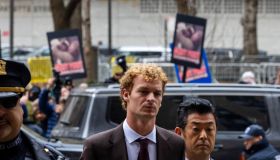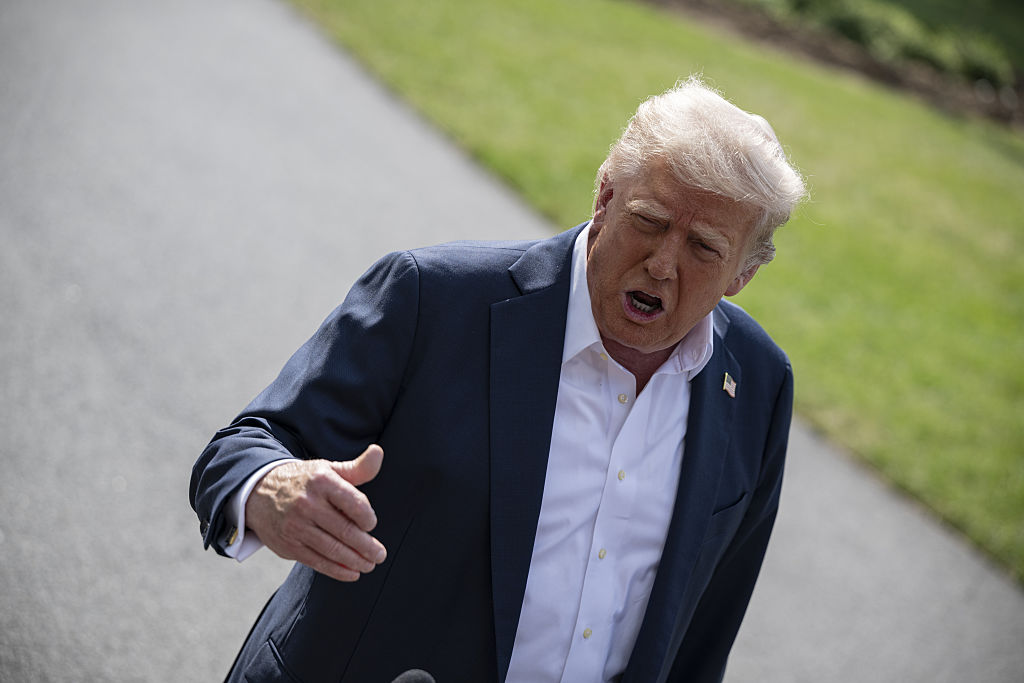Daniel Penny Grand Jury Spotlights NYC Controversial Past Cases
Justice For Jordan Neely: NYC Grand Juries Have Controversial History With Subway, Chokehold Cases
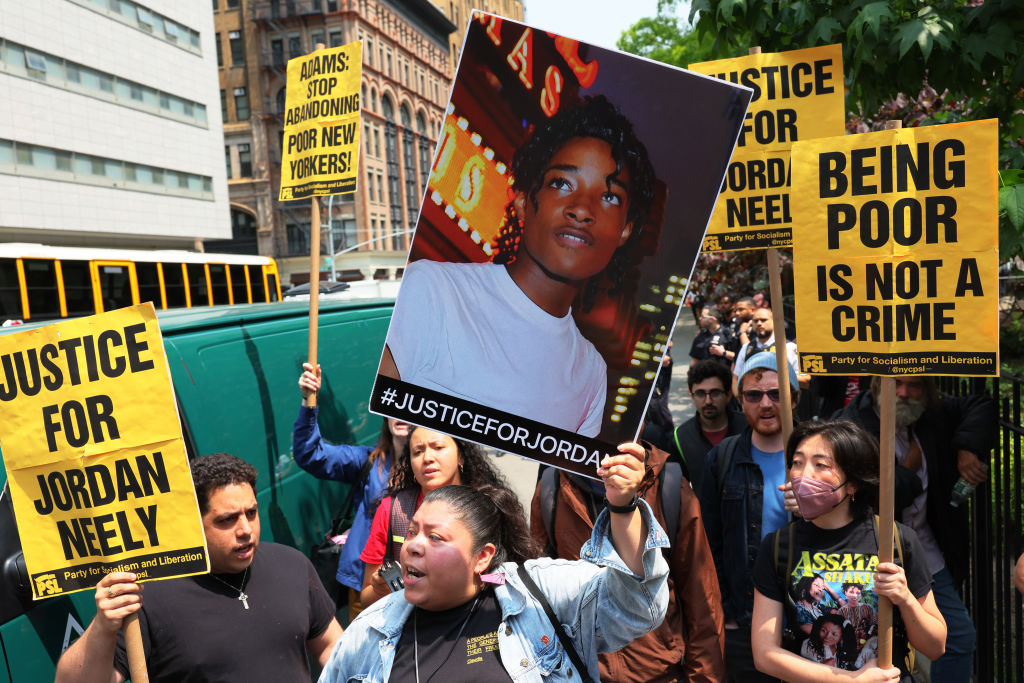
Supporters of Jordan Neely protest a rally in support of Daniel Penny at Collect Pond Park on May 24, 2023, in New York City. | Source: Michael M. Santiago / Getty
A grand jury has been empaneled and is already beginning to hear evidence in the manslaughter case against a white man who choked an unarmed Black homeless man to death on a New York City subway train last month.
While details about the secret proceedings were scarce, ABC News reported Thursday evening that the grand jury working to determine if Daniel Penny’s second-degree manslaughter charges in the chokehold death of Jordan Neely should advance to a trial has gotten underway. It was not immediately clear when the grand jury began hearing evidence in the case.
But if history with New York City grand juries hearing separate cases involving vigilante violence on a subway as well as a chokehold death — both hallmarks of the allegations against Penny — people expecting justice to be served for Neely may not want to hold their breaths.
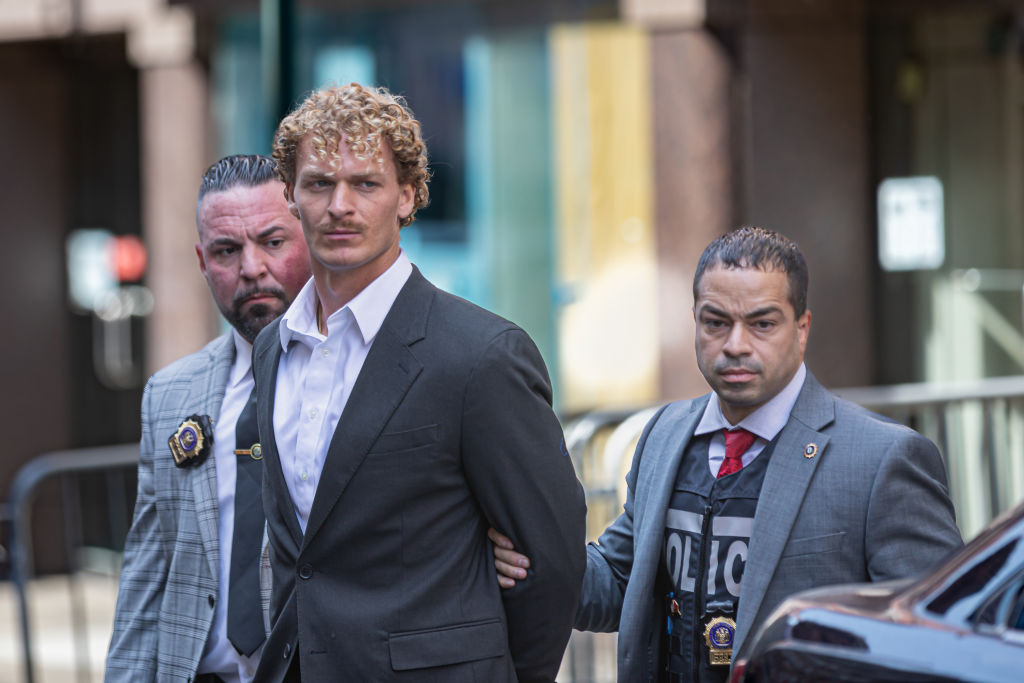
Daniel Penny is escorted in handcuffs by the NYPD after turning himself into the 5th Precinct in Lower Manhattan. | Source: Pacific Press / Getty
The case against Daniel Penny
Penny, 24, was formally charged on May 12, nearly a full two weeks after eyewitnesses claim he came up behind Neely and placed the 30-year-old in a sprawling chokehold over what’s been described as a perceived threat from the homeless man on the F-line subway train.
Neely was in the throes of a mental health crisis when he boarded the subway on May 1 and screamed at passengers that he was hungry and didn’t care if he died or went to jail while throwing his jacket to the ground. Neely also allegedly threw trash at passengers. While mental health advocates recognize that behavior as a cry for help, Penny, a former Marine, claims he identified it as a threat, prompting him to take the law into his own hands by physically accosting Neely and employing what turned out to be a lethal chokehold. Witnesses claim Penny held Neely in the deadly restraint for at least 15 minutes.
Penny was taken into custody at the scene but quickly released with no charges.
Penny’s lawyer said his client not only feared for his life but also acted to protect other passengers on the train and described him as a hero “good Samaritan,” a narrative that right-wing media has run with. Penny’s fate now rests in the hands of the grand jury, which can either decide to uphold the indictments or decline them.
His situation is eerily similar to that of two other notable cases in New York City involving Black male victims — like Neely — that resulted in what critics have long called miscarriages of justice. Whether history repeats itself with Penny is anyone’s guess, but legal precedent suggests the same could be true when it comes to adjudicating the homicide of Neely.
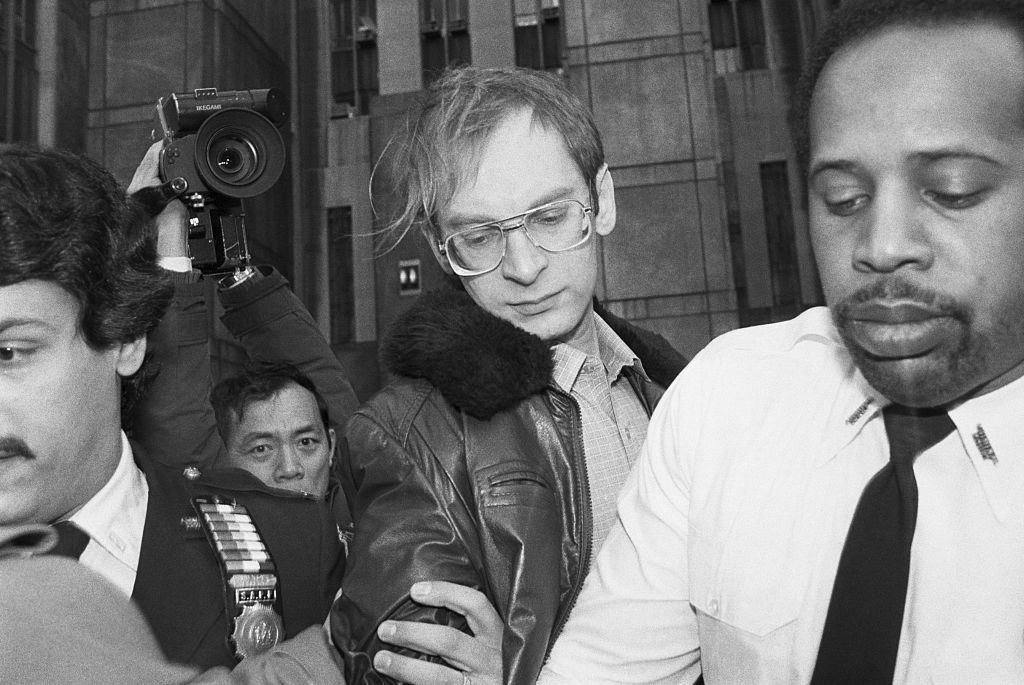
Police escort Bernhard Goetz out of a New York courthouse after a hearing in his attempted murder trial. | Source: Bettmann / Getty
Bernhard Goetz
Penny’s case is similar in nature to that of Bernhard Goetz, who New York City media dubbed “the subway vigilante” after he shot four young Black men at close range on a train in 1984.
Like Penny’s confrontation with Neely, Goetz shot Barry Allen, Troy Canty and Darrell Cabey — all 19 years old — and James Ramseur, 18, because of a perceived threat. Goetz said he believed the teenagers were trying to mug him and reacted out of self-defense. While none of the teenagers died, Goetz claimed he thought they wanted to rob him when they asked for $5. The four teens maintained they had only been asking subway passengers for money.
Goetz, also like Penny, claimed he wouldn’t change a thing and would do it again if placed in a similar situation. The grand jury heard evidence that included a video confession from Goetz claiming he shot his gun with the intention of killing the teens.
After being charged with four counts of attempted murder, Goetz posted bond and remained free as a grand jury was empaneled by the Manhattan District Attorney’s Office. But less than a month later, the grand jury declined to indict Goetz for attempted murder and instead only charged him with criminal possession of the gun he used to shoot the teens.
Robert Morgenthau, Manhattan District Attorney at the time, empaneled another grand jury after he presented more evidence in the case that decided to uphold the attempted murder charges. But a judge quickly dismissed those charges by casting doubt on the shooting victims.
The New York Times reported at the time:
Justice Stephen G. Crane of State Supreme Court dismissed the charges on Thursday, citing ”prejudicial error” in a prosecutor’s instructions last March to the second grand jury that heard the case and statements to the grand jury by two of those shot by Mr. Goetz that, he said, now ”strongly appear” to have been perjury. Justice Crane said this had ”severely undermined” the integrity of the grand jury.
After an extensive appeal process, including one court upholding Judge Crane’s move to dismiss the charges, the attempted murder charges were finally reinstated.
In 1987, nearly three years after the subway shooting, Goetz was acquitted of the attempted murder charges and found guilty of the gun charge.
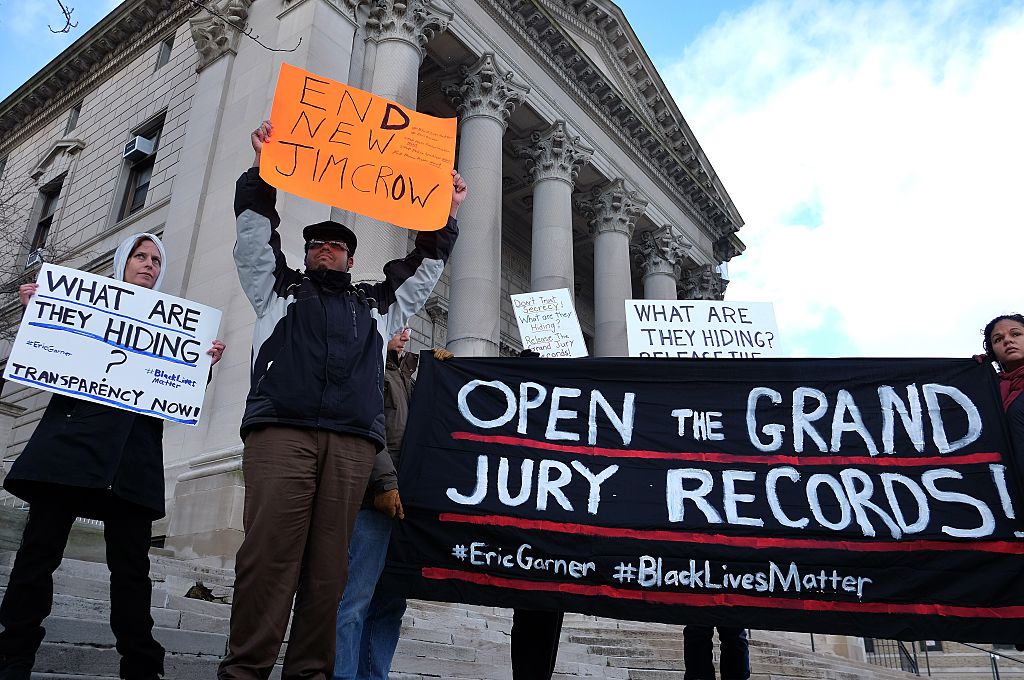
Protesters display a banner and placards during a demonstration outside the courthouse in New York’s borough of Staten Island on January 5, 2015, before a hearing in a state lawsuit seeking the release of grand jury proceedings concerning the death of Eric Garner. | Source: JEWEL SAMAD / Getty
Eric Garner
In the case of Eric Garner — the unarmed Black man choked to death in 2014 by a throng of NYPD officers trying to arrest him for the suspicion of selling loose and untaxed cigarettes, a nonviolent misdemeanor offense — the video evidence of his death was seemingly a game-changer that would ensure accountability and justice.
However, despite what appeared to be an abundance of damning evidence against NYPD Officer Daniel Pantaleo, the ringleader of the police mob that attacked Garner, a Staten Island grand jury declined to bring any charges at all.
NBC New York reported at the time:
In delivering a vote of “no true bill,” jurors determined there was not probable cause that a crime was committed by NYPD officer Daniel Pantaleo, who was seen on a widely watched amateur video wrapping his arm around Garner’s neck as the 43-year-old yelled, “I can’t breathe!” during the July 17 confrontation.
The Department of Justice even opened up its own investigation before deciding against bringing federal charges against Pantaleo.
Daniel Penny grand jury
Penny’s lawyers have said his client is prepared to testify before the grand jury, something experts have said is uncommon. ABC News reported that strategy “could head off an indictment by explaining his actions.”
If the grand jury declines to uphold Penny’s indictment, it could embolden other subway passengers — and others — to similarly employ violence over a perceived threat in a situation that may not necessarily merit such force, be it lethal or otherwise.
SEE ALSO:
Black Twitter Roasts Daniel Penny For Using Africa Road Trip To Claim He’s Not Racist
Jordan Neely’s Killer Had Help: Will The People Who Aided And Abetted Daniel Penny Be Charged Too?

